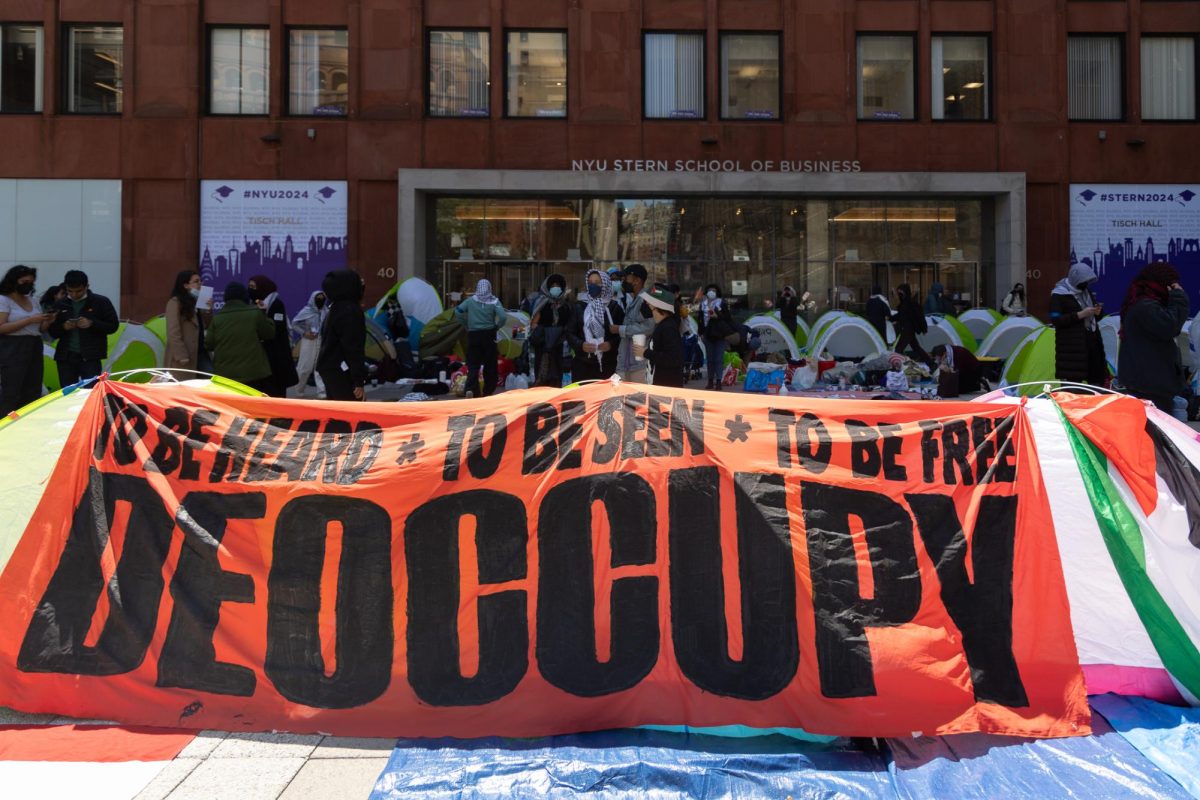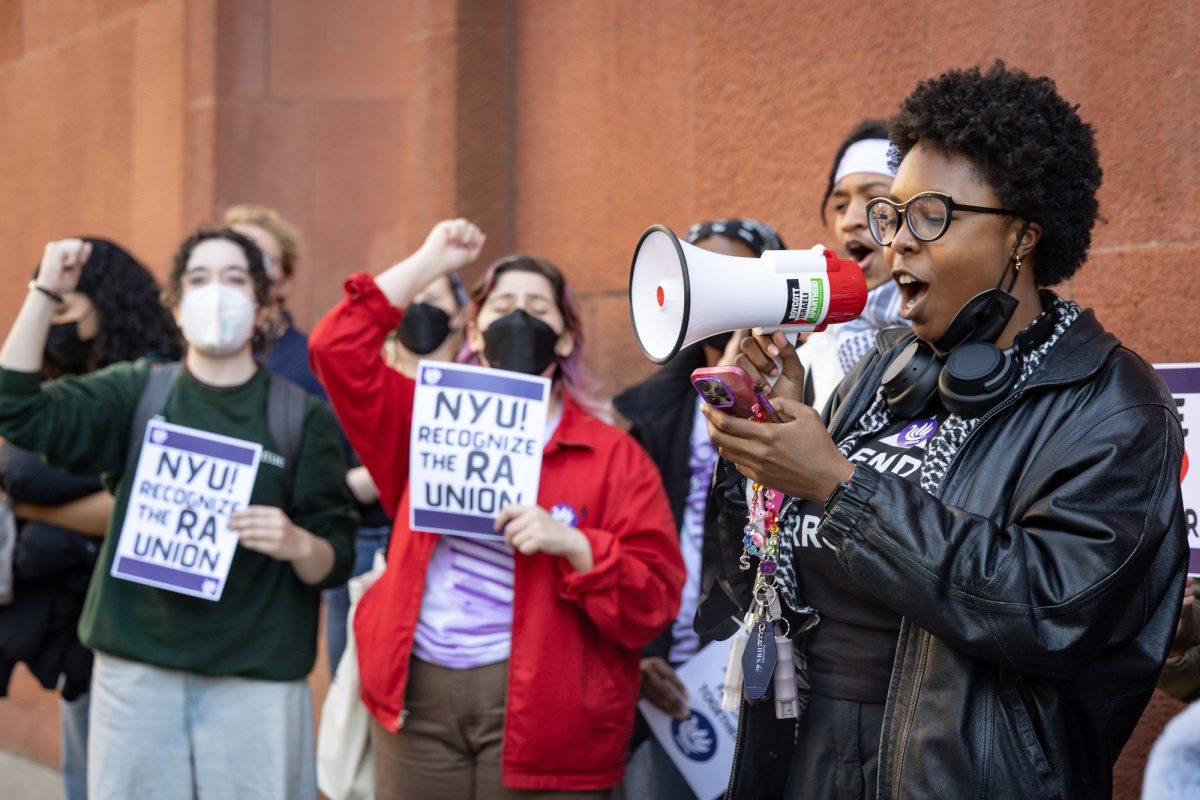Upon entering one of the New Museum’s latest exhibit “Come Closer: Art Around the Bowery, 1969-1989,” the first piece visitors see is a door. Standing freely in the center of the exhibit, artist Keith Haring’s old studio door is covered in drawings from the artists who spent time in the Bowery during the 1970s and ’80s.
Economic conditions, lowered rents and large spaces transformed the area into a breeding ground for artists, musicians and immigrants, who created a cultural haven for iconic street art, studios and the punk-rock music during that era.
“It is virtually impossible to encompass all of the art in even a small area like the Bowery in a 20-year period,” said artist Coleen Fitzgibbon, whose work is featured in “Come Closer.”
The exhibit features a variety of mediums, from posters and doodles to powerful videos and pictures of the social scene at the time.
“Artists such as Keith Haring and Christy Rupp made public installations which convey the exuberance and freedom of the moment, as well as social problems connected with the poverty around them,” said Nancy Barton, clinical associate professor of Art and Art Education at the Steinhardt School of Culture, Education and Human Development. “The Ramones’ music was emblematic of the high energy and rebellion against authority which was a hallmark of the era.”
But the Bowery has undeniably changed since this time, falling victim to many of the same influences that have commercialized neighborhoods like Chelsea and SoHo. Rising rents have driven artists into the boroughs, and many iconic spots have become stores and restaurants.
“We have to think of the bad ’70s, the bad ’80s, the crime, the drugs, the dissipation, bankruptcy of the city in the ’70s, but in fact it was also a time of great artistic and creative flourishing,” said Jon Ritter, clinical assistant professor of Art History at NYU.
More than an interesting visual experience, Barton said the exhibit is an educational trip worth taking.
“Seeing artists who chose to live in a rough and sometimes dangerous neighborhood in exchange for the freedom of expression and community they found on the Bowery is an invaluable experience for young people who have grown up in more sheltered environments,” Barton said.
“Come Closer: Art Around the Bowery 1969-1989” will be on display through Jan. 6, 2013 at the New Museum, 235 Bowery.
A version of this story appeared in the Monday, Oct. 8 print edition. Alexandra Connolly is a contributing writer. Email her at [email protected].









































































































































